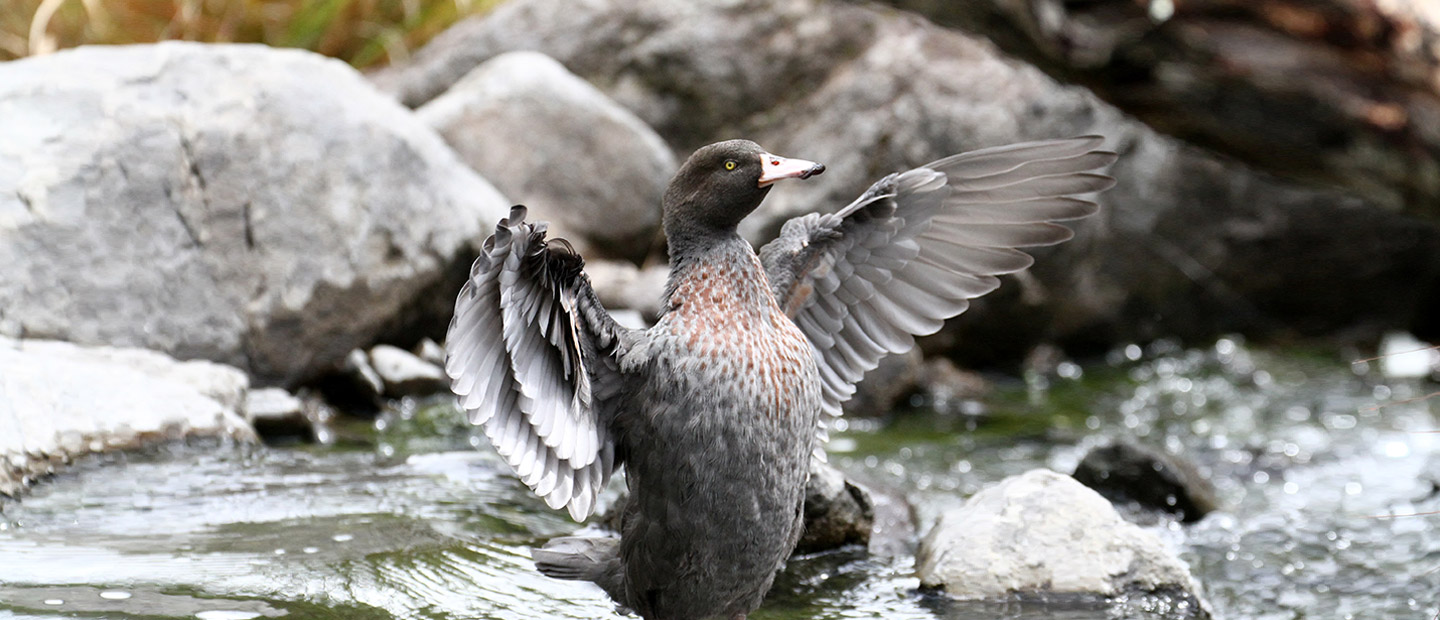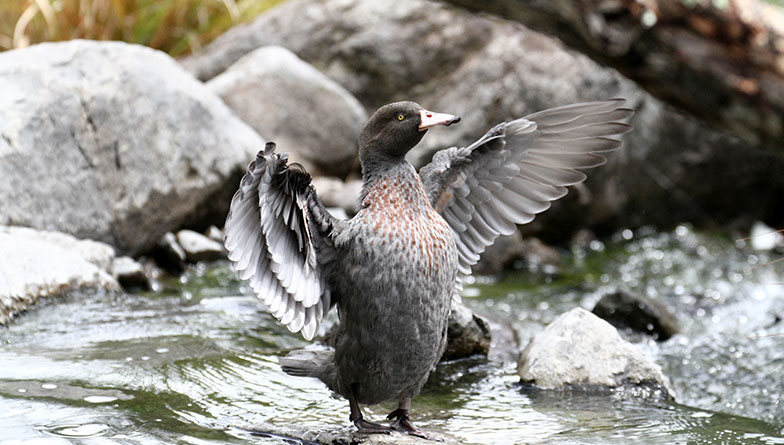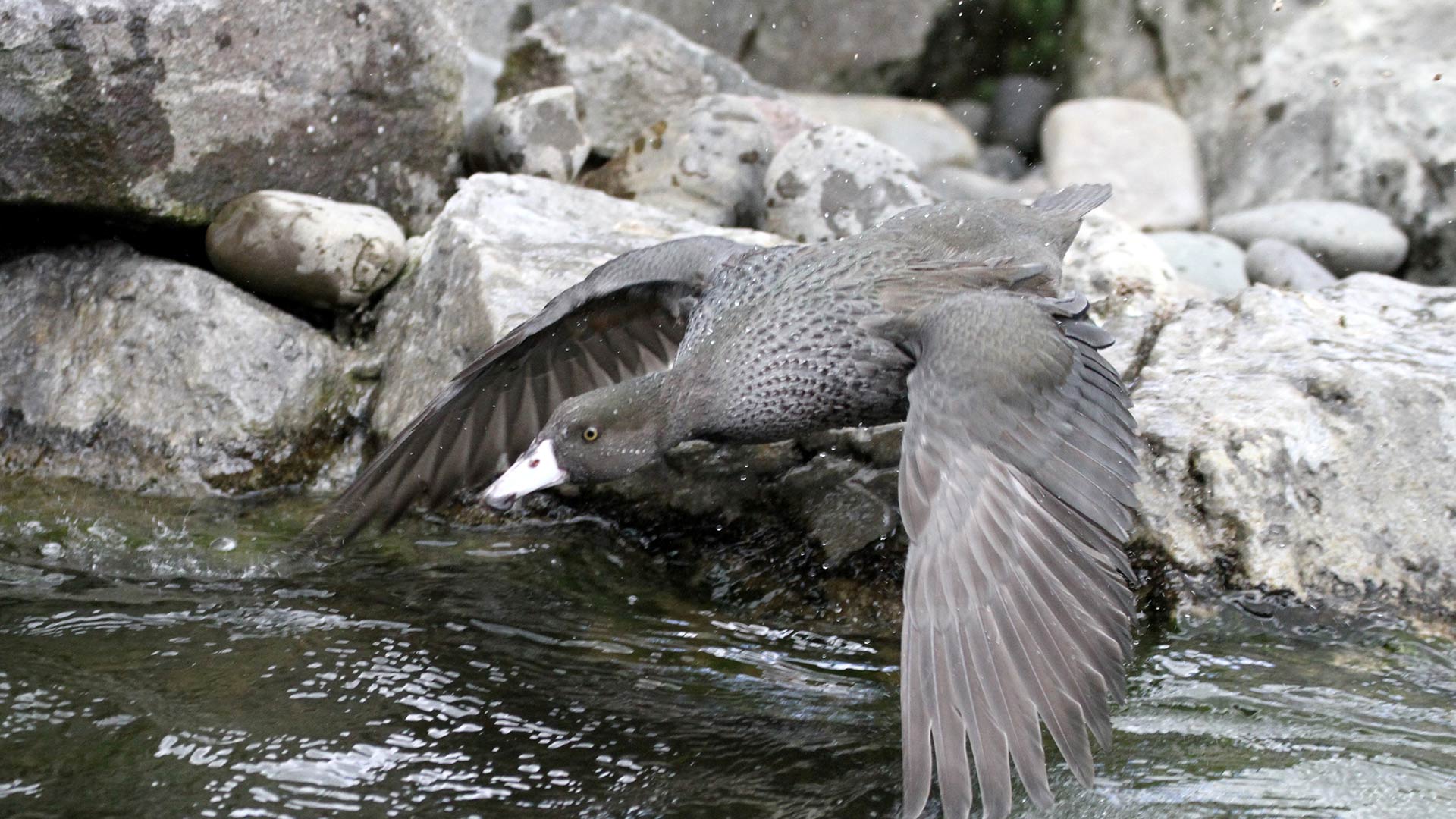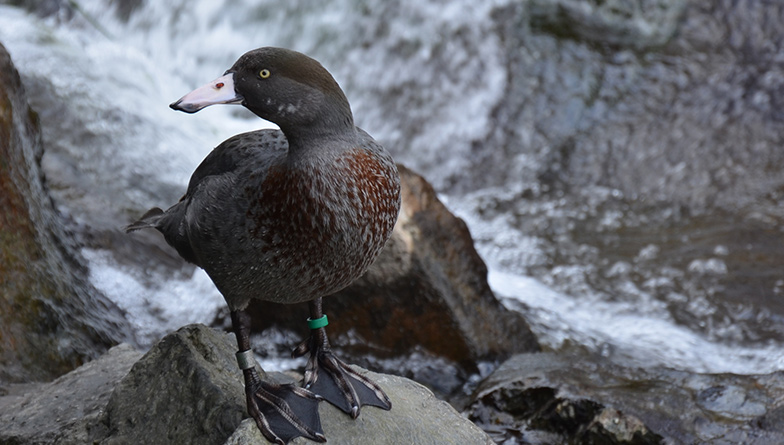As far as duck faces go, the whio is pretty special.
They have soft rubbery ‘lips’ on the end of their bill which allows the whio to scrape insect larvae off rocks while protecting its bill from damage. It is the only duck to have this adaptation!
Whio, along with all duck species, have some other pretty neat adaptations. Whio have large, webbed feet that they can fold up like an umbrella to help stop drag in the fast-flowing rivers they live in. Their body is streamlined to help water flow over it so they can effectively swim and dive. Whio also have different types of feathers, each with specific qualities. As whio live in very cold water, the insulating and waterproofing properties of their feathers are very important.






